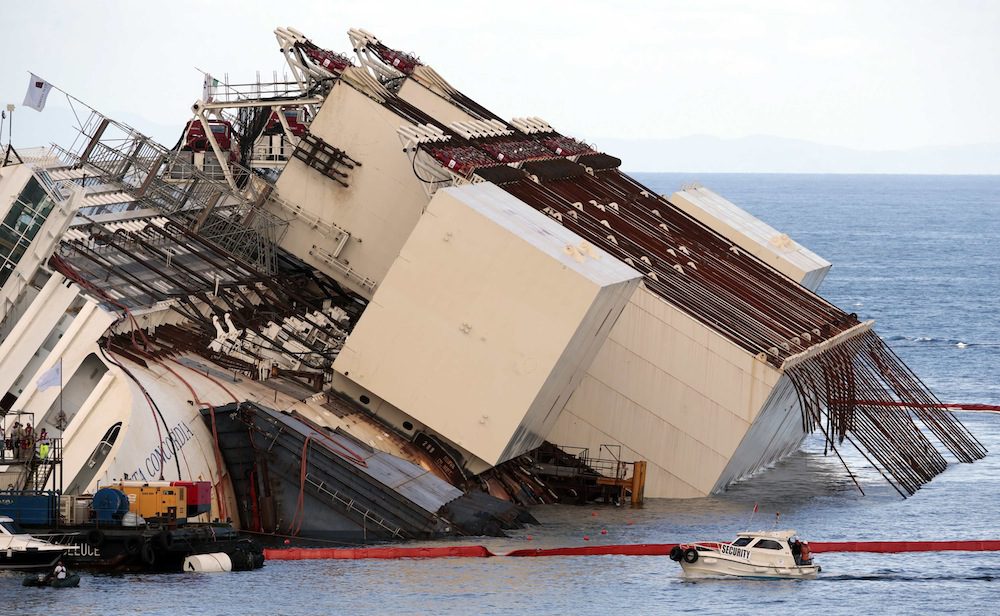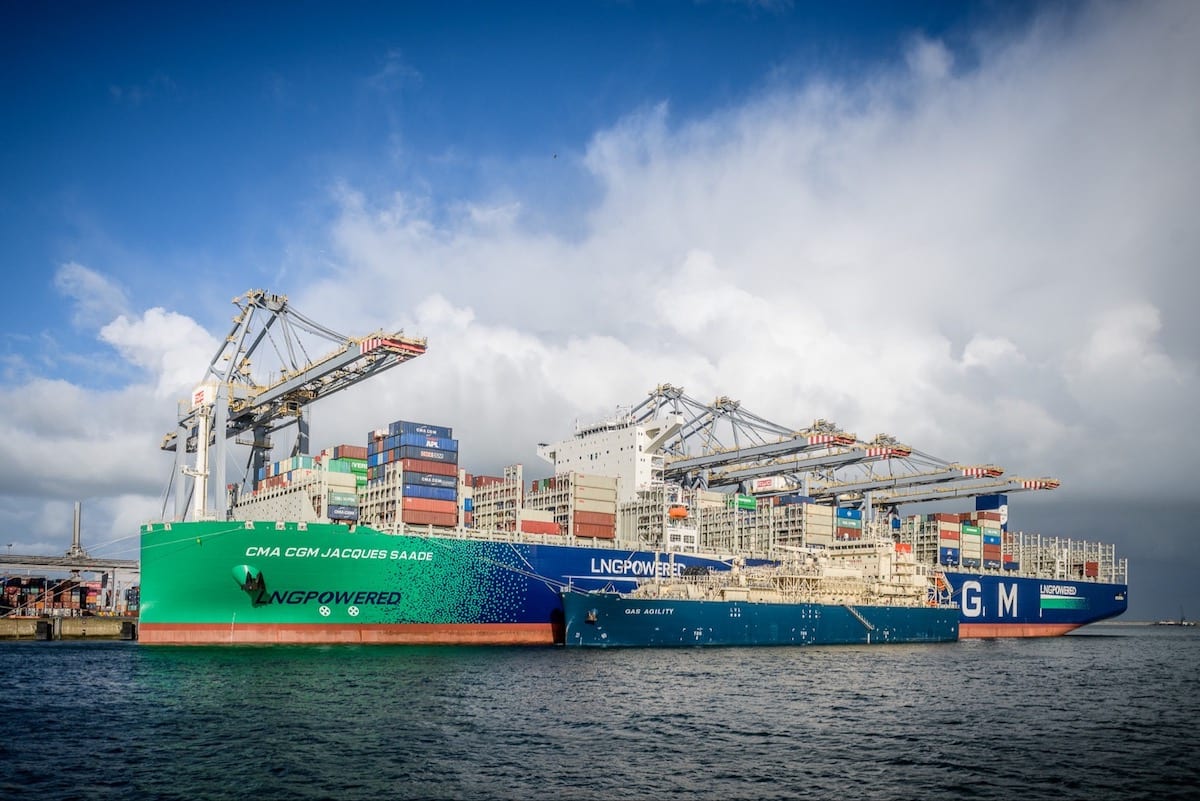The Costa Concordia, with the attached sponsons and strand jacks used to pull the ship upright, just after the start of the “parbuckling” operation outside Giglio harbor, September 16, 2013. REUTERS/Tony Gentile
Captain Rich Habib has encountered some tricky situations over the course of his 35 year career in the maritime industry. More than most for sure.
He graduated from the United States Coast Guard Academy in 1977 and spent 7 years in the Coast Guard, including a year and a half as an exchange officer in the U.S. Navy aboard the then new FFG-7 class of frigate and aboard a diesel submarine.
After resigning his commission in the Coast Guard, he transitioning into the maritime industry working his way up to Master within the heavy lift shipping and oilfield supply sector.
In 2001 he joined Titan Salvage and over the past 12 years, has moved quickly up the ranks as Salvage Master and now leads their global business as Managing Director.
Following the recent highly successful parkbucking operation of the Costa Concordia led by Titan Salvage and Micoperi, I spoke with Captain Habib last week:
A friend of mine asked me recently, “is it me, or do ships seem to be wrecking more often these days? Is safety on the high seas getting worse?”
I told him that I think a fair bit of that is due to the wider use of social media in our industry, but I honestly didn’t know the answer. What do you think?
RH: Tough question… I think that anecdotally, it feels that way. Statistically however, that does not seem to be the case. I would say overall, accidents are declining, but this is a random industry with periods of more activity than others.
This random activity is an important feature of salvage. It’s a difficult business to be in because we need to be able to respond at a moment’s notice to more than one casualty worldwide yet during slow periods we need to maintain to a high standard all that excess capacity – both the emergency equipment and the skilled personnel.
One feature to consider is that because ships are getting bigger, the costs of salvage are going up. We probably have less activity, but the size of the salvage market isn’t decreasing due to higher costs per incident, especially with wrecks.
Speaking of pricing, how do you price-out a salvage job?
There’s no standard pricing and there’s fierce competition. More often than not we bid lump sum, which is very risky and we just hope that our bid covers the cost of the job, plus profit margin, and is below the bid of our competitors. It’s a bit like heavy construction work in that regard I suppose.
How is technology changing within salvage?
Technology is impacting everything, but in the end, we’re essentially cutting up wrecks and lifting them. There are a few operational areas that technology has had a big impact on. High strength lines have come to dominate and diamond wire cutting technology is for instance more prevalent. Titan developed a new cutting technology that has some of the attributes of diamond wire while keeping some of the robustness of cutting chain.
Another area which is taking huge steps forward is oil removal technology. Remotely Operated Vehicles (ROVs) can now go deeper and remove the oil from a ship.
It’s a double-edged sword though… Because it’s now possible, some nation states are forcing P&I clubs to remove the oil, which is not cheap.
When the Prestige sank off Spain in 2002, we the industry went down more than 3,600 meters to remove the oil. A real technological feat. On the other hand, In a job off the Philippines in 2006, similar technology was used at great expense in 600 meters and no significant oil was recovered so that’s what I mean by a double edged sword. Titan conducted one of the first deeper oil removals off California from the Jacob Luckenbach for the U.S. Coast Guard using SAT divers. It’s a tough balance doing what is reasonable and right for the environment as opposed to doing things that don’t make sense and at great expense.
When it comes to technology, or innovation, within the salvage industry, it’s a difficult proposition because as I mentioned before, this is a cyclical business. When an accident occurs, we have to bid quickly and there’s a lot of tension when it comes to innovating on our own dollar versus gaining it as a result of a specific job so most of the innovation in the salvage industry is specific to a particular job.
What sort of areas were particularly innovative during the Costa Concordia salvage?
Nothing was wildly innovative, but we used lots of technology that I can now incorporate into future projects, such as underwater laser for measurements.
For the first time that I know of we completely modeled the underwater structure of a ship’s hull using high resolution multibeam sonar and married it with above water laser scanning to build a precise, complete model of the ship as she sits. Now we are using an 8-rotor “Octocopter” to conduct the 3D modeling.
At the end of the day, salvors are becoming more project managers, but their core world class salvors can never forget their core salvage competencies remain pretty much the same. The guys still are ready to be winched down onto an abandoned vessel and salve the property using pumps, etc. as well as their brains, brawn and courage. So while More and more however, we look outside via our network of contractors around the world to find the other piece of the puzzle such as strand jacks, measurement technologies, and specialized diving etc. we are still salvors at heart.
I hear you were involved with the salvage of a cement carrier which had its cargo solidify. What do you do with a cargo of hardened cement?
There are a few options that we have for such a salvage such as explosives, which is a bit more challenging post 9/11, as well as using liquid CO2 “Cardox”, chemical methods, and the old fashioned way… brute force.
Was there any doubt in your mind of the outcome of the Parbuckling Operation?
We were very confident. When you spend that much money and study that hard, there was very little doubt. A failure of a particular component of the project could have delayed us, but with the amount of safety margin built in to the project, I didn’t have much doubt about its success. To get the Costa Concordia moving, it required 6,800 tons of pull, but we did have excess capacity to pull harder.
Other salvage jobs you’re working on currently?
Since we started working on the Costa Concordia, Titan has done between 37 and 38 jobs in the meantime. We’re currently working on a a couple in Africa and we are just wrapping up a few including one in Russia and a rescue tow which had been abandoned by her crew in heavy weather. Tragically 10 of her crew were lost.
Unlock Exclusive Insights Today!
Join the gCaptain Club for curated content, insider opinions, and vibrant community discussions.

 Join The Club
Join The Club













